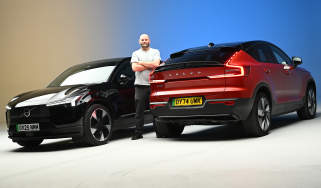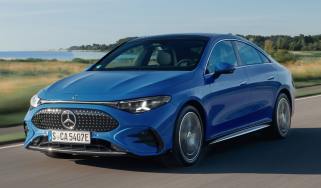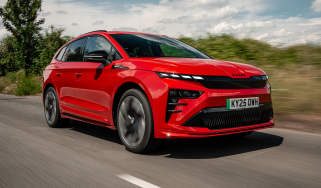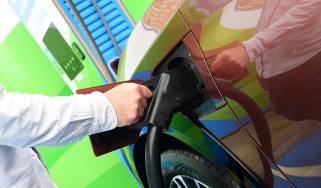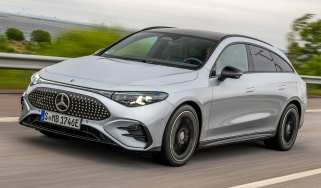Dacia Spring review
Budget brand’s smallest car, the Dacia Spring, is a truly affordable electric alternative to a petrol car

Our opinion on the Dacia Spring
On first impressions, the Dacia Spring makes a tempting case for itself, with its low price making it easier to overlook the flaws that often come with a car built down to a budget. However, delve a little deeper, and those shortcomings, chiefly the poor refinement and budget tyre choice, could make or break the Spring as a viable ownership proposition. We’d happily overlook past Euro NCAP safety ratings, because attempting to meet the safety organisation’s high standards would make the Spring prohibitively expensive, while great efficiency, ease of use and manoeuvrability mean it’s the perfect choice as a second car, especially if you’re doing plenty of urban journeys.
| Key specs | |
| Fuel type | Electric |
| Body style | Small five-door, four-seat SUV |
| Powertrain | 1x electric motor, 26.8kWh battery, front-wheel drive |
| Safety | Untested in current guise |
| Warranty | Three years/60,000 miles |
About the Dacia Spring
The Dacia Spring is the company’s first fully electric car, and it’s also the smallest model the firm offers in the UK. Both of those things are likely to attract new buyers to the brand, and this is backed up by data from the continent. Dacia says that based on Spring sales in Europe, where the car was available in a pre-facelift guise, 79 per cent of buyers were new to the brand, and 93 per cent had never purchased an electric car before.
Given that it’s the entry point to the company’s line-up, the Spring is quite intriguing. It was first introduced into Europe in 2021, but it can actually trace its origins back to China in 2019, where it’s manufactured and sold as the Renault City K-ZE, as well as under some other Chinese brands. The Renault City K-ZE is the electric version of the Renault Kwid, which is a budget petrol model in China.
There have been a host of changes to the K-ZE to transform it into the Dacia Spring, chief among them being the safety kit, such as including six airbags, more electronics and a reinforced chassis.
Dacia offers the Spring in two power outputs but with the same battery for both versions. There’s a 26.8kWh pack, which is connected to either a 44bhp or 64bhp electric motor that drives the front wheels. Despite the difference in power, Dacia quotes a WLTP-tested range of 140 miles for both versions.
The 44bhp model kicks off the range at £15,000 in Expression trim, with the more powerful motor available for £1,000 extra. Adding Extreme trim to this model costs another £1,000 on top of that, and given that the only options are metallic paint and a spare wheel, that’s all you’re going to pay for a Spring. There is one more version of the small car available, the Dacia Spring Cargo, a two-seat delivery model that’s classified as a commercial vehicle.
Performance & driving experience
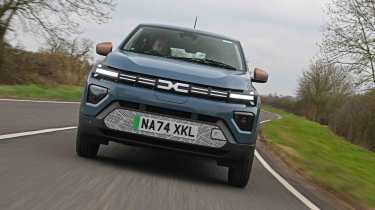
| Pros | Cons |
|
|
With even the most powerful Dacia Spring packing 64bhp and 113Nm of torque (compared with 44bhp and 125Nm for the lower-powered version), it’s fair to assume that this EV isn’t going to be winning many drag races. However, thanks to the car’s sub-1,000kg kerbweight and the fact that its peak torque is available from pretty much the second you touch the throttle, the performance feels completely up to the challenge of everyday driving. If you want to soften the throttle response, then the Eco button does just that.
Electric motors, 0-60mph acceleration and top speed
With 44bhp and a 19.1-second 0-62mph time, the entry-level Spring can lay claim to being the slowest-accelerating new car on sale today. We’d stretch to the more powerful 64bhp option if possible, otherwise the Spring really is limited to town driving. The stronger car can accelerate from 0-62mph in 13.7 seconds, which is still a second slower than the Leapmotor T03, but faster than most versions of the petrol Kia Picanto. A top speed of 78mph means you can still cruise at the UK motorway limit.
Budget cars are often fitted with budget tyres, and the Dacia Spring that we tested featured rubber from Chinese brand Linglong, which we find hard to accept even on cheap motors. These tyres offer poor grip and feedback, and we’d find it reassuring to know that the best possible rubber sits between road and car in the case of an emergency. In comparison, when we tested the Spring against the Leapmotor T03, that model was fitted with Continental tyres, which provided both plenty of grip and better refinement.
Town driving, visibility and parking
The Spring’s basic controls need just a little more refinement to make it a nicer car to drive around town. We found the throttle and brakes are quite abrupt when they first engage, which makes it hard to drive smoothly at low speeds. It’s very noticeable if you’re inching into a tight parking space, when it becomes hard to creep slowly and precisely.
The brake regeneration also doesn’t engage as subtly as other systems. This can be felt when trying to hold the car at a constant speed on a downhill stretch of road; the regen grabs and then releases, giving a bit of a nodding-dog sensation to those on board.
While the steering is a little sticky around straight ahead, it’s very light, and the 9.63-metre turning circle is brilliant in tight spots. The ride is fairly soft, and despite the short wheelbase, it isn’t too bouncy, either.
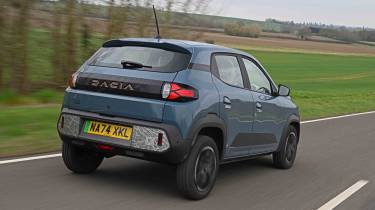
B-road driving and handling
The main issue with the way that the Spring drives isn’t with the car itself, but the tyres Dacia has fitted. When we tested a Spring, it was fitted with Linglong tyres, and they’re short on grip – even for a car where performance very much takes a back seat.
This means that, if you’re a little too keen with that already sharp throttle, then it’s easier than you might imagine to spin the front tyres away from a standstill, even in the dry. The tyres also don’t help a car that’s already short on steering feedback, making it seem even more remote.
That aside, there’s fun to be had with maintaining momentum in the Spring along a twisty road. Body roll is reasonably pronounced, so you can figure out when the (low) limits of those Linglong tyres are being reached. And when that happens, the Dacia feels neutral, because the stability control cuts in fairly harshly.
Motorway driving and long-distance comfort
This isn’t the sort of car any of us will see pounding up and down the M1 on a daily basis, but the Spring will sit at 70mph quite happily if it needs to, and the official top speed stands at 78mph.
You do have to cope with quite a noticeable amount of wind and particularly road noise, though, while the narrow, tall body is a little susceptible to crosswinds.
“It’s so refreshing to drive an EV that feels light on its feet; even though there’s not much outright power, the Spring lives up to its name with the way it responds to the throttle away from rest.” – Alex Ingram, chief reviewer. Attended the Dacia Spring European launch and tested it in the UK against the Leapmotor T03
| Model | Power | 0-62mph | Top speed |
| Spring Electric 45 | 44bhp | 19.1 seconds | 78mph |
| Spring Electric 65 | 64bhp | 13.7 seconds | 78mph |
Range, charging & running costs
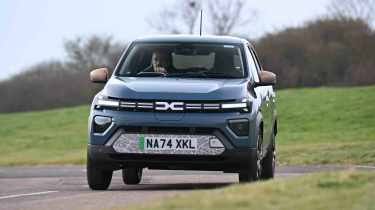
| Pros | Cons |
|
|
Electric range, battery life and charge time
While most EVs weigh a huge amount due to vast battery packs, the 26.8kWh usable battery capacity of the Spring is barely any more than some plug-in hybrid cars. However, having this relatively compact battery in a car as small as the Dacia keeps the weight down to a level that matches most petrol city cars; officially, it tips the scales at just 984kg. As ever with lightweight cars of any type, this reaps big rewards when it comes to efficiency.
During our week with the more powerful 64bhp Spring, driving on a range of roads – including motorways, which sapped the battery charge more quickly than anywhere else – we easily recorded an efficiency of 5.0 miles/kWh. Given that the temperature was around 12 degrees Celsius during that time, that figure could improve during summer.
Conversely, we’d expect a drop-off in winter, too. At our recorded efficiency, the Spring is capable of a real-world range of 134 miles. Dacia quotes a range of 140 miles on the WLTP combined cycle, which rises to 190 miles in the urban cycle.
Given its size, purpose and range, the Spring is best suited to a buyer who can top up at home, so the fact that its rapid-charge speed hits only 30kw is not a huge issue. It hit its advertised speeds whenever we did use a rapid charger, and officially, a 20-80 per cent top-up takes 45 minutes.
If you want to save energy when it’s cold, you can pre-heat the Spring while it’s plugged in. As you might expect at this price point, there’s no energy-efficient heat pump available to help reduce the load on the drive battery when driving on cold days.
| Model | Battery size | Range | Insurance group |
| Spring Electric 45 | 26.8kWh | 140 miles | 24 |
| Spring Electric 65 | 26.8kWh | 140 miles | 25 |
Insurance groups
Depending on the powertrain, the Spring sits in either group 24 or 25 for insurance. That’s high for a small city car, so it will be worth shopping around.
Tax
From April 2025, all new cars with a list price of less than £40,000 are subject to the same vehicle excise duty (VED) rates, irrespective of powertrain, so the Spring will cost the same amount as a combustion-engined car or PHEV for road tax. The first year will still only set you back £10, though.
Depreciation
The Spring is predicted to hold on to roughly 44 per cent of its value after three years or 36,000 miles. That’s very similar to the Leapmotor T03’s figure, and better than the similarly sized but more expensive Hyundai Inster.
To get an accurate valuation on a specific model check out our free car valuation tool...
Interior, design & technology
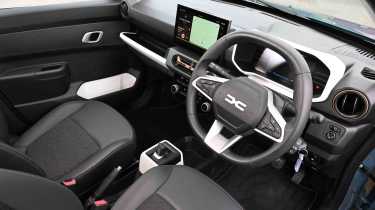
| Pros | Cons |
|
|
The Spring’s fantastically intuitive cabin looks funky, but predictably feels a little cheap in places.
Interior and dashboard design
A basic, rugged cabin design is exactly what you would expect of a car at the price of the Spring, and from that point of view, it hits the brief. The dash design takes inspiration from the Duster’s, with its copper highlights and angular air vents, but the simplicity of the main controls is what the Spring does so well.
Everything – including the electric window switches – is grouped around the middle of the dash, and the air-conditioning controls take the form of big, chunky buttons that are easy to use on the move. The media volume controls, located on the right-hand side of the steering column, are barely changed from Renaults that came out 30 years ago. There’s a good reason for that: they remain incredibly intuitive to use. This is a basic vehicle that teaches some significantly more expensive new cars a thing or two about ergonomics.
Materials and build quality
This is a cheap model, and in places it really feels like it. The plastics are hard, the doors close with a hollow bong, and sound insulation is in short supply. This isn’t a big deal in isolation, but the Leapmotor T03 feels significantly more substantial for similar cash.
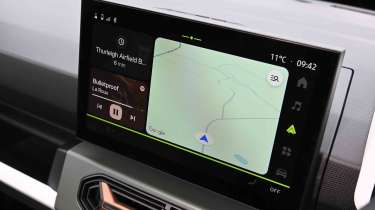
Infotainment, sat-nav and stereo
Tech is certainly thin on the ground aboard the Spring. But a digital instrument panel – something that would have been unheard of on a city car barely five years ago – is standard on every model. The display is similar to the set-up used by the latest Duster, and it’s bright, sharp, and presents information clearly.
Dacia’s Media Nav Live system (standard on Extreme trim) isn’t feature-packed, nor is it the fastest or most responsive touchscreen we’ve ever tested. However, for the money, it’s very hard to fault. The system is largely logical, simple and looks smart, with clear graphics that are easy to read.
Pairing a smartphone to use Apple CarPlay or Android Auto connectivity – something that most drivers now choose to do anyway – is very straightforward. The 10.1-inch screen is positioned high enough on the dash to be seen, but not so high that it’s a distraction.
Expression models have a simplified New Media Control system with DAB radio and connectivity via the Dacia Media Control smartphone app, so you can use your smartphone for multimedia functions.
“Simplicity can be seen everywhere, from the single windscreen wiper and washer jet, to the steel wheels. This is simple motoring without unnecessary fripperies or any pretence to be sporty or posh.” – Alex Ingram, chief reviewer.
Boot space & practicality
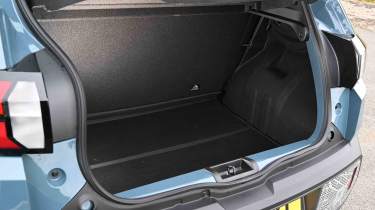
| Pros | Cons |
|
|
The Spring is a tiny car, so space comes at a premium. Yet it’s not unreasonable compared with some similarly sized city cars, and boot capacity is excellent against key rivals.
Dimensions and size
A tall body gives an SUV-like look, but like the Toyota Aygo X, in every other dimension, the Dacia Spring is proportioned like a city car. Its narrow body means it’s easy to manoeuvre, while a short overall length means there are compromises in terms of interior space.
| Dimensions | |
| Length | 3,701mm |
| Width | 1,583mm |
| Height | 1,519mm |
| Number of seats | Four |
| Boot space | 308-1,004 litres (plus optional 35 litres in the nose) |
Driving position, seats & space in the front
The Spring’s lofty driving position provides great all-round visibility. While the seats are more comfortable than they look, a lack of height and reach adjustment in the steering wheel means that not everyone will find their ideal seating position. There is no left-foot rest, but there’s lots of space in the footwell beside the small brake pedal to find a comfortable spot.
Interior storage isn’t in short supply, with Dacia claiming as much as 32.7 litres in the cubbies and bins. The insides of the large door bins are white so that items are easier to find, even when it’s dark. Elsewhere, there’s a shelf above the glovebox, and an open area just ahead of the gear selector, which is ideal for a smartphone.
Seats & space in the back
This is not a big car, and that means that rear-seat space is fairly limited. But kneeroom only just falls short of what you get in compact SUVs such as the Jeep Avenger; headroom is tighter, even though the seat base is a little too close to the floor.
There are only four seats on offer, so the narrower cabin isn’t much of an issue. Yet the Leapmotor T03 and the Hyundai Inster both offer more space in the back.
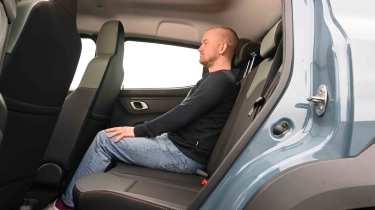
Boot space
At 308 litres, the Spring’s boot capacity is very generous for such a small vehicle. With the rear seats folded, that volume grows to 1,008 litres. The rear seat back folds in one piece; while more expensive cars split the seat back in two, a single-piece fold isn’t unusual at this price point. However, the need to simultaneously tug two fabric hoops on either side in order to unlock the seat from its upright position is a bit irritating.
Add the optional Storage Pack (which costs less than £300), and not only do you get an extra box in the boot and a front central armrest, but the Spring benefits from storage under the bonnet, too; the 35-litre plastic tray is perfect for holding the charge cables. It’s also an ideal spot given that the Spring’s charge port is on the nose.
“The Extreme trim Spring has vehicle-to-grid connectivity, allowing you to power a wide range of high-powered appliances, such as an electric barbecue, by using an adapter inserted into the charging port. Dacia reckons that an hour’s cooking session would consume about 13 per cent of the total battery capacity.” – Alex Ingram, chief reviewer. Attended the Dacia Spring European launch and tested it in the UK against the Leapmotor T03.
Reliability & safety
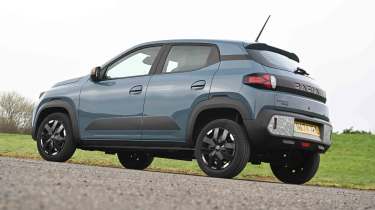
| Pros | Cons |
|
|
Dacia is yet to submit the latest version of the Spring for assessment by Euro NCAP, and it doesn’t plan to do so until 2027, when the car will have uprated safety-assist systems. The pre-facelift model achieved one star in testing by the safety body, with low scores in both the occupant protection and safety-assist categories.
All cars get six airbags, cruise control and a speed-limit warning. The latter can be easily disabled through the MyPerso function. This lets drivers program a single button to change the assist settings exactly to their liking.
| Key standard safety features | Euro NCAP safety ratings |
|
|
Buying and owning
- Best buy: Dacia Spring Electric 65 Extreme
With such low prices, we don’t think it’s a stretch to upgrade to the top-spec model - you get more kit, better performance and the touchscreen system that improves the driving experience.
All Dacias have a three-year, 60,000-mile warranty. The Spring’s battery is covered by a separate warranty that runs for eight years or 75,000 miles.
Dacia recommends servicing the Spring once a year. That’s more frequently than some other EVs, which tend to require a check-up every two years. Given the simplicity of the Spring and the mileage most cars are likely to cover, that seems a little more frequent than some EV owners would argue is really necessary.
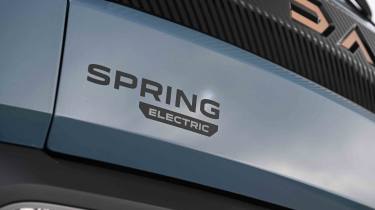
Dacia Spring alternatives
The Dacia Spring faces a tough battle to convince UK buyers, because in addition to the similarly priced Leapmotor T03 and the similarly sized but more expensive Hyundai Inster, the Spring has to fight off a range of used EVs that are available for similar cash – a three-year-old Vauxhall Corsa Electric or Fiat 500e both easily fall below the £15,000 mark.
Then there are the EV sceptics that need to be convinced, because cars such as the Kia Picanto and Hyundai i10 are able to travel a lot further on a tankful, which could be all the attraction needed for buyers unable to charge an EV at home.
Frequently Asked Questions
If you want no-nonsense transport for short journeys, are happy to go electric and are able to charge an EV at home, then the Dacia Spring makes a lot of sense. It’s affordable, practical for its size and is fine to drive, if rather unexciting.





